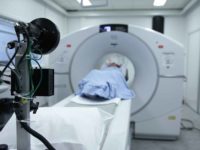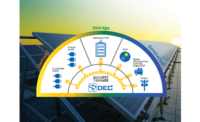Engineering departments in today’s health care environment are tasked with an ever-growing list of responsibilities, such as emergency readiness, PMs, reactive maintenance, ensuring regulatory compliance, managing infection control, maintaining life cycle budgets, managing utility spend, and the list goes on. In many cases, these responsibilities must be addressed, even though departmental resources are held steady or actually reduced year over year. Fortunately, the explosion of connected devices and the Building Internet of Things (BIoT) has revolutionized the way facility operators interact with the built environment, ensuring even the most resource-constrained engineering departments are able to address the multitude of operational challenges they must resolve on a day-to-day basis.
Data is everywhere in the built environment; however, it’s rarely used to maximize its full potential. Connecting to a building’s existing data sources does not need to be a heavy lift, and with the right tools and appropriate expertise in place, an enhanced analytics program can be deployed swiftly to transform the data into a steady source of operational value.
Data-Driven Methods to Derive Operational Value
Health care facilities communicate data in numerous ways. Some of the most readily available data are found in the following areas:
- Utility meters — Monthly or interval meters monitoring resource consumption from utilities, such as electricity, natural gas, and water. In some instances, interval data may also be available either through existing submeters or directly from the utility through a smart meter.
- BAS — The most data-rich environment for operational data in health care facilities is typically the BAS. Within the BAS data, you will find continuous data streams detailing how some of the most energy-intensive components in the building are being operated with real-time feedback.
Utility Meters
The ubiquity of utility meters all but ensures health care facilities have access to some sort of constant data stream. Granularity and consistency of utility meters varies per utility company and sometimes per building within the same utility company, but generally the data from utility meters can be useful in a number of ways:
-
Benchmarking energy consumption allows facility operators to compare their buildings to similar-use facilities either locally in the same geographical location or against a broader data set of regional or national assets;
-
Establishing trendlines allows facility operators to understand the “normal state” of how their facility consumes energy and can help identify when something deviates from the desired state;
-
Baselining past usage and normalizing for known variables allows facility operators to measure the impact of projects that may have a benefit to operational efficiency; and
-
Performing analytics on this data can identify performance anomalies and behavior that goes against expectations.
For example, Figure 1 shows the results of an analysis performed on chilled water purchased from a district utility plant by a hospital located in the Northeast. A major performance anomaly was identified by comparing daily chilled water usage and average daily outside air temperature: As the daily average outside air temperature dropped below 40°F, chilled water consumption started increasing. In fact, the hospital was using as much chilled water when the daily average outside air temperature was 5° as when the temperature was 60°.
FIGURE 1. Daily chilled water consumption compared to daily average temperature for a hospital located in the northeastern U.S.
Taken in isolation, this analysis doesn’t provide much insight into what may be happening within the facility; however, a similar analysis was performed on the daily steam consumption and a similar anomalous trend was identified: As the temperature outside got warmer, the daily steam consumption continued to drop. At first glance this may sound intuitive since steam consumption reduced as temperatures increased, but eventually the load should level out to a baseload level. In a health care environment, this occurs because some level of process steam will be required for process loads related to sanitization, dehumidification/humidifying, etc. However, since this health care facility never reached a baseload level, the steam consumption was being impacted by other variables, as shown in Figure 2.
FIGURE 2. Daily steam consumption compared to daily average temperature for a hospital located in the northeastern U.S.
Again, in isolation, the information from the analysis performed on the steam system does not provide many clues into the root cause of the anomalous behavior; however, utilizing the chilled water and steam system analytics together starts to paint a clearer picture that the hospital’s heating and cooling systems are out of sync. Sure enough, after taking this data and performing an inspection of the building’s HVAC system, facility operators were able to identify and correct numerous cases of simultaneous heating and cooling throughout the hospital.
Another benefit of using utility meter data is that the proliferation of smart meters has enabled access to interval energy data, typically on a 15-, 30-, or 60-minute basis, without the need to install any new hardware. More granular data provides greater visibility into facility operations and can speed up the investigation of performance anomalies.
FIGURE 3. Weekly interval electric data compared to normalized baseline.
For instance, Figure 3 shows the results of an analysis performed on interval electric consumption over the course of a week compared to the normalized weekly energy consumption baseline. This analysis quickly identified that a large piece of equipment was left running at night — as shown by the highlighted areas. The facility operations team performed a review of the central plant equipment and discovered a chiller that was intended to be shut off at night had been put in manual mode and was no longer following the time of day schedule. Without this data, this issue may have persisted for quite some time, resulting in higher operational costs and significantly reducing the useful life of the equipment.
Building Automation System
As one of the most data-rich environments in virtually any facility, the BAS has long been utilized to provide operational information about the building’s systems. Most people who have spent time in a chiller plant have seen a clipboard hanging from the side of the chiller with a log of temperatures, differential pressures, and other pertinent operational data about the chiller — one of the largest and arguably most important pieces of HVAC equipment. Current technology now allows building operators to efficiently trend and store similar pertinent data for all types of equipment, both big and small, and a growing list of tools are available to help parse and make use of all of that data being collected.
FIGURE 4A. BAS screenshot above, compared to the same data compiled in a data aggregation and analytics tool (below – Figure 4B).
Figure 4 shows an example of a BAS screen on the top and how that same information may be presented within data collection and analytics tools on the bottom.
FIGURE 4B.
Once the data is being collected from the BAS, if the right tools and subject matter expertise are in place, a significant amount of value can be derived from the data. The most common method of deriving value from BAS data is to write algorithms (or “rules”) to correlate different system points along with commands and other operating parameters to ensure the facility is operating at an optimal level. Once established, engineers can use these rules to perform a process called automated ongoing commissioning (AOCx). The AOCx process is similar to other types of retro-commissioning processes, but the value is exponentially increased since technology is leveraged to perform these activities across tens of thousands of data points simultaneously, 24 hours per day.
FIGURE 5. Value proposition of different commissioning activities.
Figure 5 details the value potential for different retro-commissioning activities. Traditional retro-commissioning can be an effective solution to optimize how systems operate; however, it has some significant drawbacks in that optimization activities are conducted during a point-in-time; therefore, operating conditions may need to be simulated. For instance, if you need to retro-commission the heating system in the middle of summer, the HVAC system will need to be forced into heating mode temporarily to verify system operations. Then, as soon as the retro-commissioning activities are completed, the building will likely experience some form of “drift,” and portions of the system will revert out of the optimized state over time until the next retro-commissioning process is performed.
Continuous commissioning is a process that addresses some of the shortcomings of the retro-commissioning process by performing commissioning on a recurring basis. This provides an opportunity to commission building systems while the building cycles through its normal operations and can help mitigate the risk of performance drift. However, one of the major drawbacks of the continuous commissioning process is that the amount of value that can be identified is limited by the amount of visibility the commissioning agent has into the systems and how much of that information they are able to process.
AOCx addresses most of these concerns by leveraging technology to continuously watch tens of thousands of BAS points simultaneously while constantly running rules to correlate data and surface efficiency opportunities that may not be readily apparent through traditional commissioning approaches.
AOCx Examples
The following five examples highlight the value the AOCx process can deliver from BAS data as described in the previous section.
Example 1: Leaking Steam Valve
Summary: A leaking steam valve was discovered due to a large temperature increase across the preheat coil when the valve was being commanded closed.
Annualized Savings: $245,000
Additional benefits: Patient comfort, asset life cycle improvement.
Details: As shown in Figure 6, the preheat coil discharge air temperature was approximately 25° higher than the mixed air temperature when the mixed air temperature was averaging around 80°. This is far outside of established operating procedure, so this was picked up by the rules being run at this site and flagged as a fault. This issue was investigated and repaired by the facilities team, which is highlighted by the red arrows in Figure 6, when the preheat coil dropped to match the mixed air temperature, indicating the valve is operating properly.
FIGURE 6. Example 1 – Leaking steam valve.
FIGURE 7. Example 2 – Economizer mode always on.
Example 2: Economizer Mode Always On
Summary: The economizer mode was always on, bringing in excess amounts of hot, humid air during cooling mode.
Annualized Savings: $3,760
Additional benefits: Patient comfort, asset life cycle improvement.
Details: It was discovered that the BAS was enabling the economizer mode when outside conditions were not suitable for economizing, which added additional load to the system and impacted tenant comfort in the occupied space.
Example 3: Compliance reporting
Summary: Leveraging the BAS data and AOCx rules to trend and quickly resolve issues with the isolation rooms.
Annualized Savings: Varies based on fees associated with joint commission surveys and prep work.
Additional benefits: Compliance reporting, patient comfort, equipment resiliency.
Example 4: High CO2 Levels
Summary: The BAS was closing the outside air (OA) damper on AHU-4 to minimum position despite high levels of CO2 in the space being served by the unit.
Annualized Savings: $0
Additional benefits: Patient comfort, improved IAQ.
Details: The air handlers in common-use spaces are equipped with demand control ventilation, which modulates the intake of outside air based on CO2 levels measured in the space. However, during certain portions of the day, the BAS would bring the OA damper on AHU-4 to minimum position even though CO2 levels in the space were continuing to rise — resulting in rapidly increasing CO2 levels in the space when the OA damper was at minimum position. AHU-4 CO2 levels tracked closely with AHU-5’s, yet AHU-5’s OA damper would stay at maximum position, which would keep the CO2 in the space at an acceptable level. The BAS contractor was brought in to review and revise the demand control sequence for AHU-4, which improved the issue.
FIGURE 8. Example 3 – Isolation room compliance reporting.
FIGURE 9. Example 4 – High CO2 levels.
Example 5: Valve and Damper Hunting
Summary: The PID loop for the steam valve was not properly tuned and created excessive valve hunting.
Annualized Savings: $0
Additional benefits: System reliability, asset life cycle, patient comfort.
Details: Finding valves and dampers that are wildly oscillating is a fairly common operational anomaly uncovered through the AOCx process. This can be the result of a programming error, a failing valve not functioning properly, or a PID loop falling out of calibration as the system ages. This is difficult to detect without trending data and knowing what to look for as it’s generally detected either through multiple open/close sequences in a short amount of time or a series of variances in the rate-of-change in a valve/damper’s operation.
As is evident in the previous examples, the AOCx process delivers compelling results across numerous value propositions. Typical results derived from an AOCx program are:
- 2x-4x ROI typical first year;
- 5-10% average first year energy savings;
- 50% improvement in HVAC related O&M hours;
- 40% reduction in HVAC related complaints;
- 10% Reduced asset breakdown and life cycle extension; and
- Improved compliance reporting and sustainability reporting.
Perhaps most importantly, the AOCx process can directly improve the standard of care in a health care facility by reducing the risk posed by hospital acquired infections (HAI). The following areas are directly impacted by the AOCx process, which help mitigate HAIs:
-
Temperature and moisture — Controlling temperature and moisture can help prevent the spread of pathogens, which tend to grow rapidly in a humid environment. By constantly monitoring temperature and relative humidity values along with the performance of each piece of equipment, the root-cause of deviations from optimal indoor air quality can be quickly determined and rectified.
-
Pressurization — Pressurization protects against cross contamination from the infiltration of air from one space type to that of another. This is of great importance in health care settings, but it can be very difficult to control. By constantly monitoring the static pressure and equipment operations associated with critical zones, the AOCx process will help identify the root-cause of anomalies when pressurization requirements aren’t met.
-
Ventilation — Dilution ventilation helps control infectious particles by introducing outdoor air, usually two to five air changes/hour (ACH), to dilute space air and then exhausting that amount as contaminated air. The AOCx process can help detect the root cause of deviations in acceptable ventilation and IAQ requirements.
Data is everywhere in today’s health care facilities, and health care engineering departments are increasingly relying on these valuable data streams to gain powerful insights into how their facilities are performing. It allows health care engineering personnel to track, analyze, and optimize all sorts of disparate systems in a cost-effective manner on a scale not previously available.
FIGURE 10. Example 5 – Steam valve hunting.
The exponential growth of BIoT ensures that increasingly more devices in health care facilities will come online and start reporting data. Accordingly, the value of AOCx only increases and becomes an even more indispensable tool in any health care facility operator’s arsenal. AOCx provides tremendous value today and positions operators for success in the not-to-distant future.
References:
- Mills, 2009, Building Commissioning: A Golden Opportunity for Reducing Energy Costs and Greenhouse Gas Emissions















